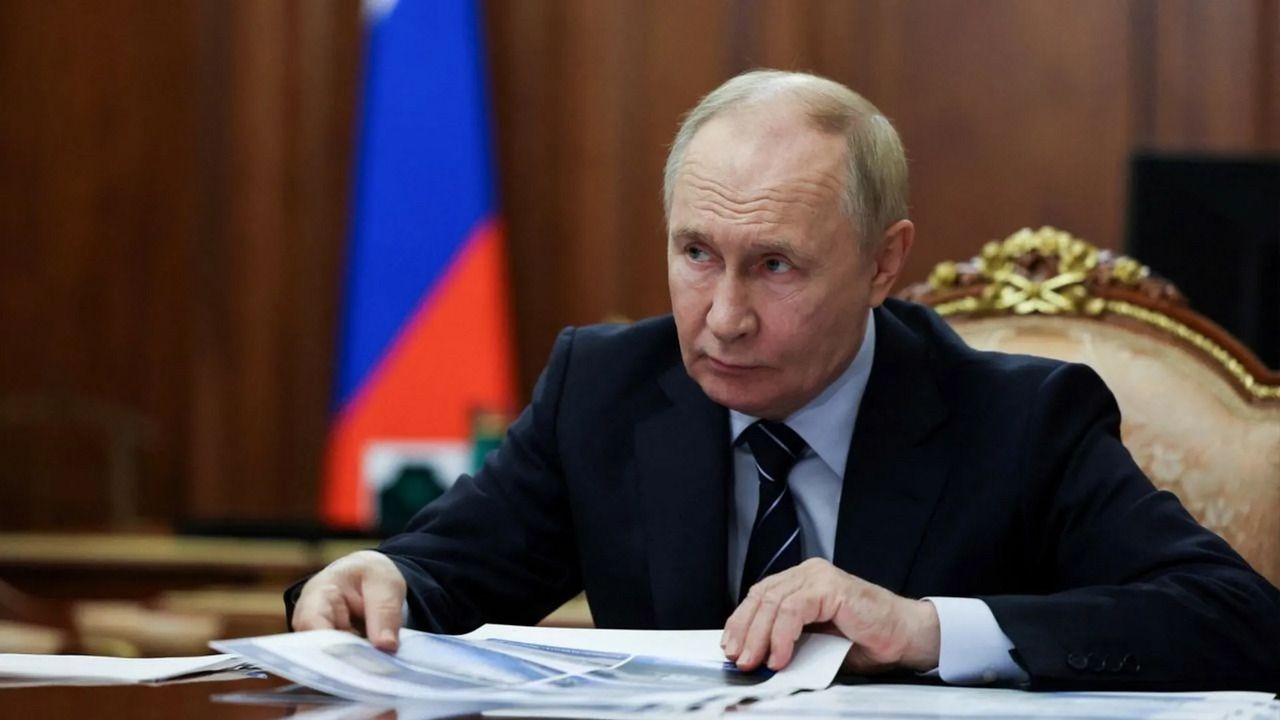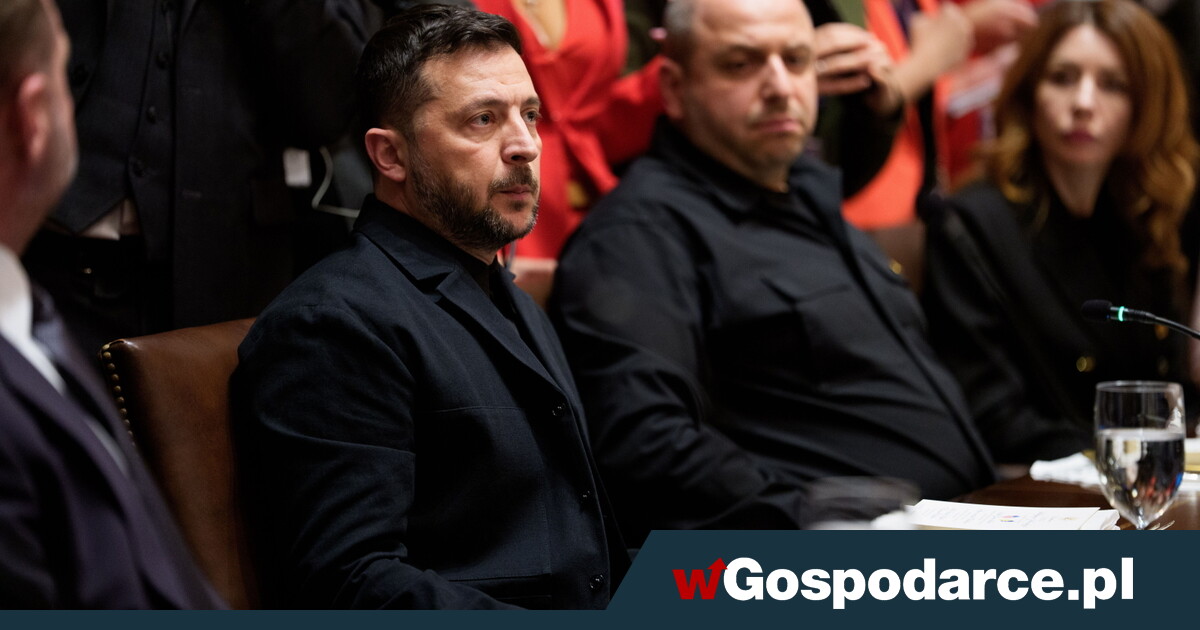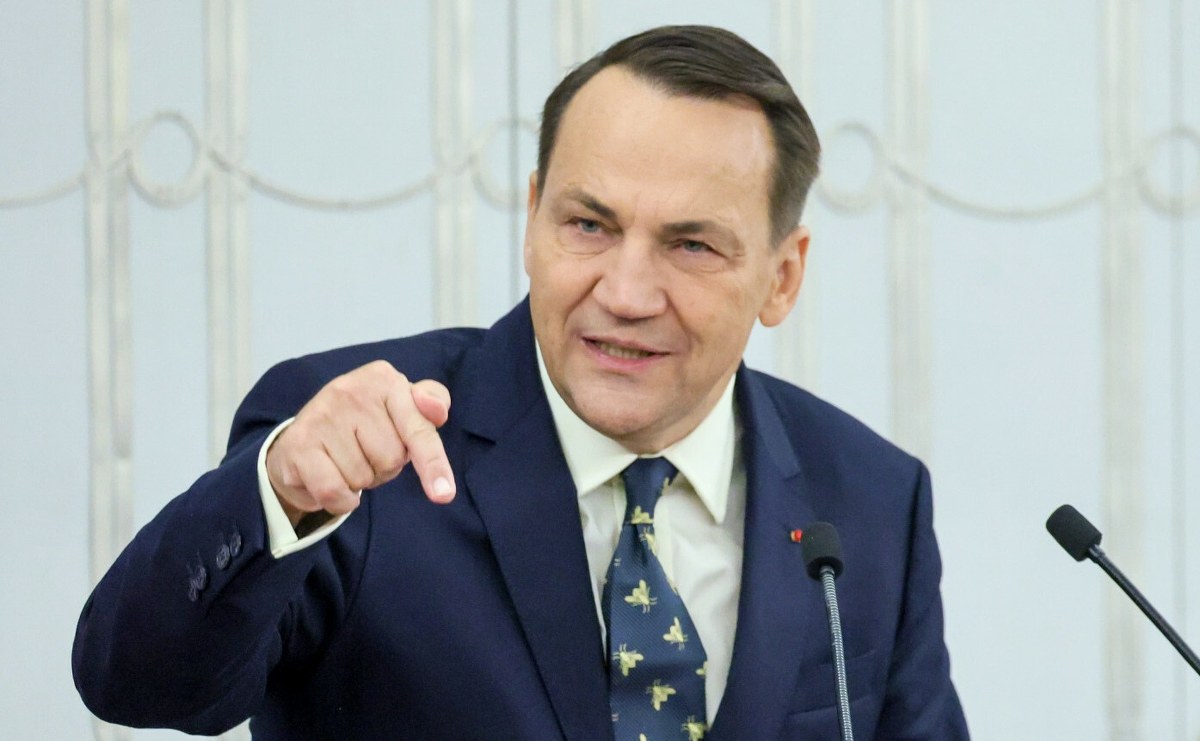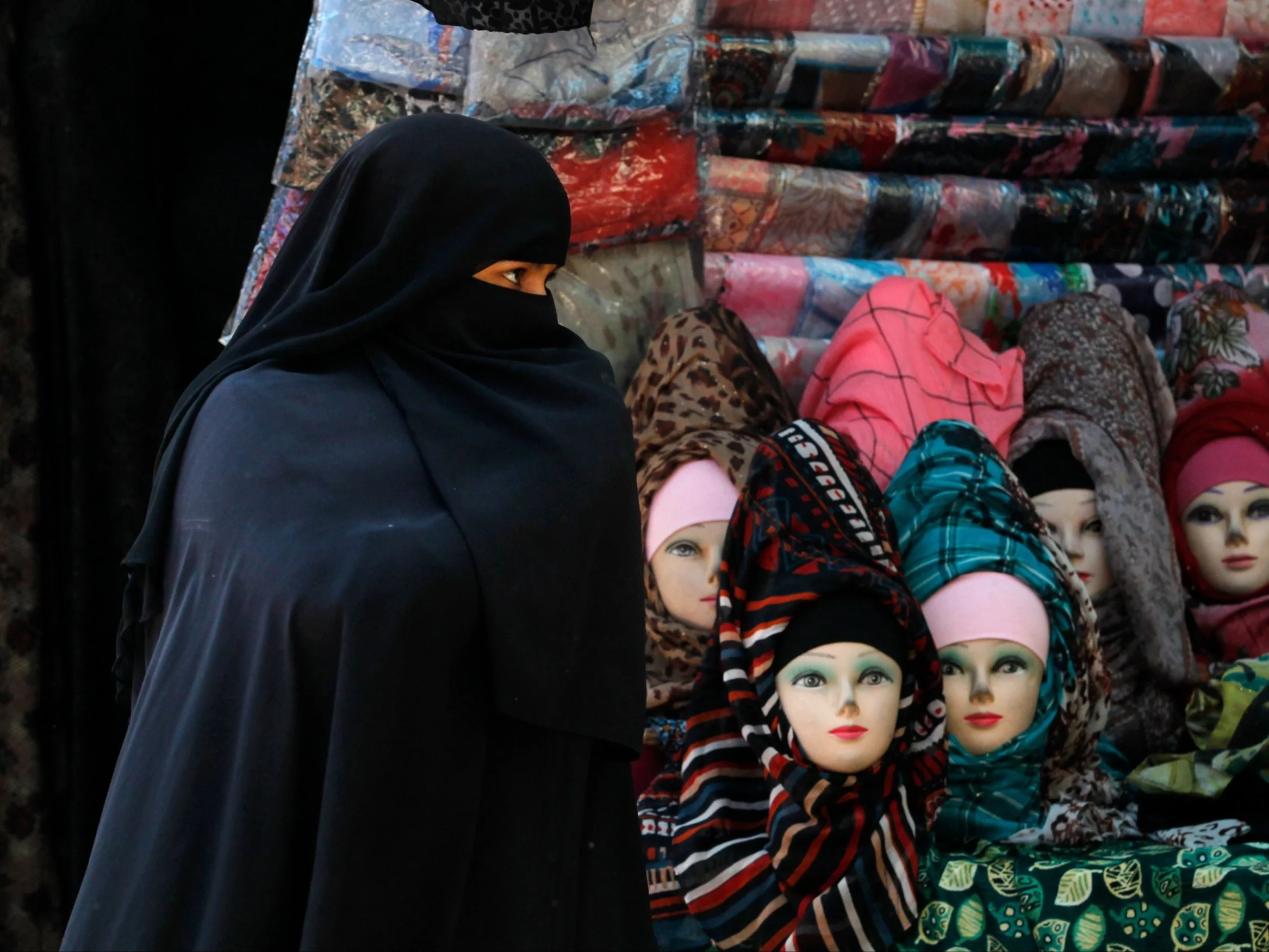Patronite: patronite.pl/krzysztofwojchal– become a patron of the YT channel, access a closed group on FB, ask questions about Q&A materials.
In the blog, I have repeatedly, in the context of the situation of Russia, referred to the story of Daedalus and Icarus, indicating that the Kremlin authorities will shortly lead the country to uncontrolled quilting down. Problems affecting the Russian Federation are so many that respective books could be created about them. I listed any of them in the text entitled “The Russian Federation has already lost – the question of how much more harm can it do?’ and I besides described the disastrous political decisions of Vladimir Putin, which could velocity up Russia's fall – vide the text entitled ‘Russian Ikar – flight to the abyss“.
However, while I have previously discussed the long-term, negative processes for Moscow and the genesis of the future collapse of the Russian state, AEROFLOT can become a direct symbol of the collapse.
Aeroflot is the largest passenger air carrier in the Russian Federation. Russian Public Aviation Lines S.A. are a company controlled by the state (51% of the shares), which before the COVID-19 pandemic had about 40% of the aviation marketplace in Russia. besides thanks to daughters specified as Rossiya Airlines, Pobeda or Aurora. As of December 31, 2019, the company had 359 aircraft (counting its own machines and subsidiaries). The vast majority of the fleet were European Airbus and American Boeing aircraft. As it is easy to guess, this second fact is presently a large problem for the Russians.
The Western announcement (US, EU, UK) of sanctions on Russian airlines had already appeared in November 2021 and was a consequence to the migration crisis caused by Russia and Belarus on the border with Poland. 10 November Ambassadors of the 27 EU countries met behind closed doors to discuss restrictions against Minsk. It was most likely already considered to impose sanctions on Aeroflot.
The invasion of Ukraine of February 24, 2022 accelerated the process. The sanctions imposed by the European Union, the United States and the United Kingdom included not only Aeroflot but besides another Russian carriers (e.g. the second largest carrier in Russia: S7 Airlines). They included a ban on the export of aircraft and parts to Russia. Also blocked the anticipation of providing service and repair services as well as financial and leasing services. At the same time, Russian carriers were banned from flying over the EU's airspace and from utilizing EU airports.
How severe Western sanctions are against Russian airlines is the fact that out of a 1000 aircraft flying so far over Russia, nearly 3⁄4 were machines manufactured in the Union or the United States. In fact, the majority of aircraft were leased, and the deadline for the termination of leasing contracts was set at 30 March. Fearing that the lessors will repossess the aircraft, Aeroflot authorities announced on 8 March thatsuspend all abroad flights but in the Belarusian direction. In another words, the Russians were not going to return the machines. No wonder. It is estimated that of the 980 passenger machines flying over Russia, as much as 777 was leased. Consequently, the Russians were in danger of fundamentally grounding the airline and almost full communication paralysis of the country – erstwhile it comes to air transport. That is why the Kremlin authorities decided to take over the leased machinery.
The inertia of a Russian bear?
The Russians' decision to de facto Stealing planes may be outrageous, but it was expected. For the failure of most aircraft would be of immense importance to the vastness of Russian territory, which cannot be dealt with any another way than by air connections. Travel by car over thousands of kilometres is fundamentally pointless (due to costs, road condition, travel length), and rail transport can take up to a fewer days. As a result, inhabitants of Chelabinska (1.8 1000 km from Moscow), Omska (2.7 1000 km), Novosibirska (c. 3.3 1000 km), Krasnojarska (4.1 1000 km), Irkutsk (5.2,000 km) or Vladivostoku (more than 9,000 km by road to Moscow!) are connected to the office in Moscow mainly via air roads. deficiency of aviation could be compared to paralysis of the legs of the Russian organism. As if blood and nutritional values (gas/oil) would proceed to circulate in 1 circulation, but inertia would limit control over the overseas territories of the Russian Federation. And let us remind you that it is thanks to the Zaural energy natural materials that the Russian colossus is inactive able to stand on his feet.
Moscow office authorities are well aware that without their direct control and demonstration of force, distant territories could yet be separated from Russia. For this reason, the natural regions with resources do not derive the benefits of extraction and export that they could. The proceeds of the sale of hydrocarbons and another natural materials go to the headquarters, and from there are distributed for the needs of the Kremlin authorities, and are additionally utilized to finance districts that live on a pot of Moscow (such as Chechnya, Dagestan or Crimea).
Air passenger traffic is simply a kind of binder, thanks to which people surviving in large cities in Siberian wilderness have contact with the remainder of the country. While travelling, they besides have a chance to feel national identity with fellow countrymen, as well as to benefit from various kinds of goods and privileges. People belonging to local elites (both political and business) appreciate the chance to fly to Moscow and there to do business. For example, it is besides crucial to be able to send children to the best schools in the country's capital. These children – raised in Moscow schools and universities – become intellectual citizens of Russia, not, for example, associated with local lands of social activists who skeptically approach distant geographical authorities from the Kremlin.
Thus, passenger air traffic has a advanced integration value in Russia. At the same time, it makes it very easy for central authorities to control local apparatus. The second are aware that, if necessary, advanced notes from Moscow can arrive in the most distant areas of Russia within hours, not weeks. And this with the appropriate services or even an army (aeromobile units). That changes the optics a lot.
Russia is not internally coherent
The issue of the integrity of the Russian Federation, as well as the sense of national and national belonging of all its citizens, is rather hard to capture and present on hard data. Among others, besides due to the fact that Moscow does not like to disclose applicable statistic even if they are conducted. At the same time, the reliability of the data available is besides questionable.
Nevertheless, remember the historical experience. In 1917, erstwhile the Russian Empire collapsed, a number of different types of entities appeared in its place. On this basis, historical sentiments of the regions afraid can be identified. Apart from the territories and nations that are now independent, there are inactive regions within the borders of modern Russia that historically tried to break distant from it.
For example, during the 1917-1920 civilian War, she fought for independency Northern Caucasus Mountain Republic. The Republic was created by any kind of agreement between the Chechens, the Awaras, the Dargians of Osethite, the Ingus, and many smaller cultural groups. It is worth remembering that Chechnya inactive fought for independency from 1994 to 1996 and 1999 to 2009. Thus, the full Precaucasia region can at any time become a fresh inflammatory point in the Russian body.
Another subject who fought during the civilian War for independency was the so-called. Green Klin. It is the Ukrainian historical name of a territory in the Far East inhabited by... Ukrainians.
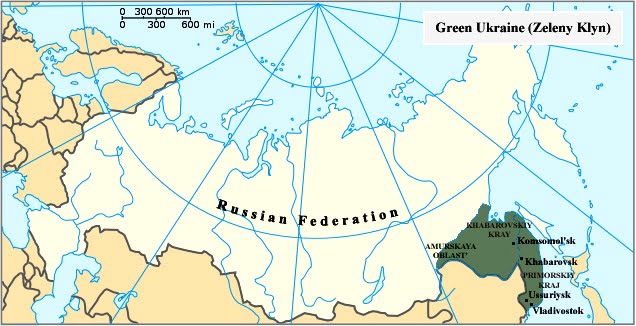 The Green Clinic territories against the background of modern borders of Russia – the origin of wikipedia.
The Green Clinic territories against the background of modern borders of Russia – the origin of wikipedia.According to various data, during the civilian war, these areas were inhabited up to 75-80% by people displaced from Ukraine. More than 100 years of rusification was evidently effective and according to the 2010 census as many as 86% of the inhabitants of Green Klin considered themselves Russians. However, if the interests of local communities diverge with Moscow's interests besides far, all kinds of resentiments can come back. And the people of the Far East can callback their origins and even begin to sympathize with the attacked Ukraine. These are speculations, of course, but it is worth remembering the cultural and historical aspects which have their crucial place in the basket of factors affecting the stableness and cohesion of the country.
Interestingly, the top territorial creation of the Bolshevik Revolution was Siberia fighting on the white side. Although it should be remembered that this was mainly due to the Czechoslovak Corps, which had previously fought on the side of the Russian Empire against the Central States.
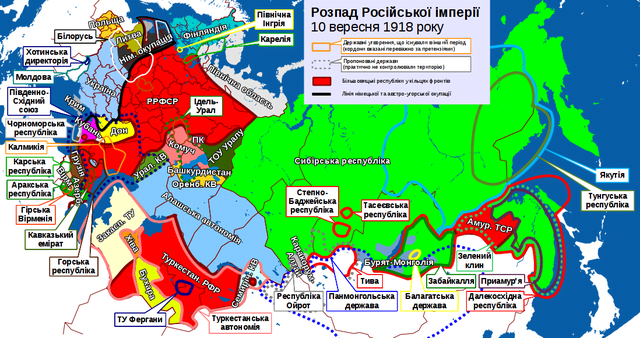 Para-state entities formed on the rubble of Russia, 1918 – green marked by the Republic of Siberia- source: wikipedia.org, author: Тутовий
Para-state entities formed on the rubble of Russia, 1918 – green marked by the Republic of Siberia- source: wikipedia.org, author: ТутовийFollowing the surrender of the Tsar, the corps was to be withdrawn by transsyberian railway to the port of Vladivostok, where an evacuation was planned. However, this did not happen and the Czechoslovak Corps participated in the civilian war fighting against the Bolsheviks. In this case, attention should be paid to the fact that tiny forces (approximately 35,000 people) could take control of the vast area of the confederate territory. It was adequate for the Czechs to take over the only railway way and almost immediately became masters of the largest territorially two-state created on the ruins of the Russian Empire.
In fact, it's adequate to take over Omsk to this day, and the land road to the Far East will be closed. Taking control of Perm and Ufa, for example, could let almost all the overseas territories to be removed from Russia.
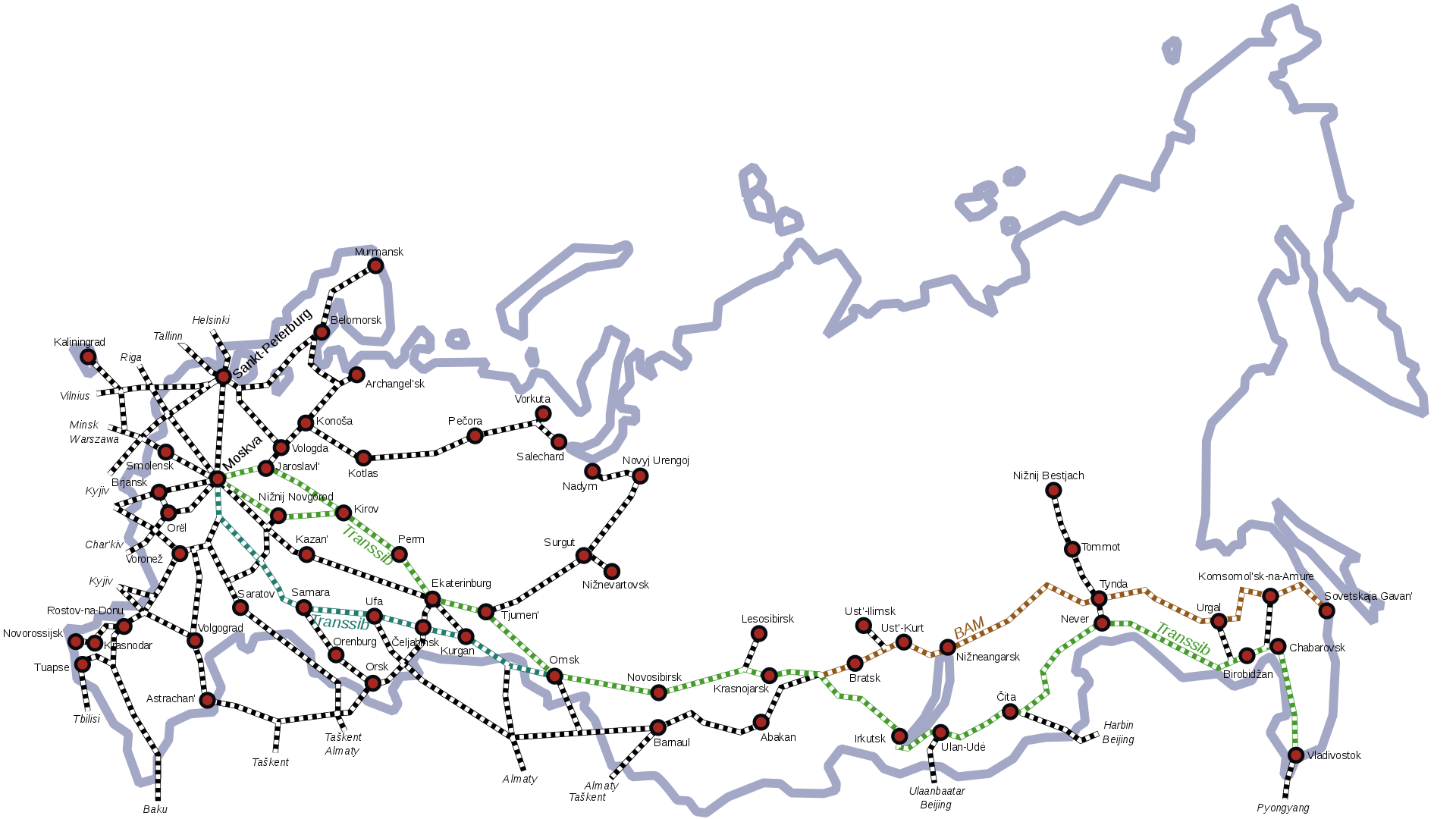 Main rail network in Russia – source: wikipedia.org
Main rail network in Russia – source: wikipedia.orgSo it should not be amazing that for decades the Russians have invested in many air-desert and aeromobile units. They were to service not only for fast external intervention, but besides to let fast spread of troops within the country. If it were necessary. Here it is worth to signal another Russian problem, connected with losses suffered in Ukraine in specified formations...
Buy a book or an ebook. 400 pages of analysis and about 200 pages of forecasts for the next 10 years. Find out what else, in addition to the planned Ukrainian-Russian war in 2022, can wait for individual countries of the world, including Poland:
Three DEKADA. planet present and in 10 years
Maintain the sky fleet at all costs
Boeing? - It's gonna go away...
Maintaining home air services is simply a critical issue for the Kremlin authorities. However, requisitioning leased aircraft is simply a temporary solution. Aeroplanes require continuous maintenance care, periodic inspections, and especially replacement of parts that are consumed during operation. Meanwhile, Russia – due to sanctions – was cut off from spare parts as well as service services from manufacturers and Western service companies.
Such difficulties will be felt with each next hr of device flight. Planes request to be inspected at the airports where they operate. These take place in rule cyclically erstwhile all 30-90 days depending on the unit (the alleged A Check). besides a somewhat deeper B Check service takes place at airports erstwhile all fewer months. This makes all major Russian airports gotta have appropriate tools, parts and staff.
In addition, there are inactive in-depth inspections in peculiar service hangars (C Check – all 12-24 mc-e and D Check – almost all part is checked all fewer years). And here the Russians may have an even bigger problem, due to the fact that part of the fleet has so far been operated in hangars located in the west. The queue for these most serious reviews (D Check) could take years. Therefore, the service calendar was planned well in advance. Thus, the Russians will not be able to carry out specified inspections for part of their fleet due to sanctions, while their own hangars and qualified personnel in Russia will not be able to handle as many aircraft as Russian airlines have (excluding the issue of the ability to operate Western machinery).
In fact, it is certain that safety standards in Russia – erstwhile it comes to civilian aviation – will shortly cease to apply. The services will be held besides seldom (if at all) and possibly not sufficiently qualified employees (the request to increase employment, while losing Western experts). Moreover, not all parts can be imported from China. possibly the Chinese will be willing to pay any of the stored surpluses, but the sharp increase in orders on the Chinese side will immediately draw the attention of Western producers. And the capacity of the "left" channels for distribution of spare parts will immediately be severely reduced.
Although a partial remedy to the situation could be the introduction of Russian production machinery at airports. The point is that jet engines to Sukhoi were built based on parts originating, among others, from the French Safran company. Their production stood in March as a consequence of sanctions, and consequently the French suspended cooperation. The fresh Russian civilian aviation hope – the MC-21 aircraft – which was to replace the ageing Tupolavy, besides has problems due to the broken supply chains. The series production of this device must wait until the Russians win in replacing the components imported from the west.
No connections = no flights = no profits
Finance is another problem for Russian airlines. The western ban on the usage of airports by Russians hit the full aviation sector in Russia. No calls are no customers who were willing to fly west. This in turn results in little request for passenger transport and thus little revenue.
The Russians felt it almost immediately. Between February 24 and May 2022 closed 11 smaller airports in Russia. The airport staff began to be released massively. There are thousands of employees per airport.
In April, Moscow announced a recapitalisation of the aviation sector amounting to EUR 1.5 billion (107 billion rubles). This appropriation is besides intended to cover the improvement of manufacture and to enable the mass production of aircraft based on 100% home components. It is simply a very ambitious project, but even if money is found (and the war is on), it is inactive not known how long it will take for the Russian manufacture to make its own technological solutions, which so far came from imports.
Summary
There is inactive a frequent narration in public space that western sanctions imposed on the Russian Federation do not take the test. According to it, Russia is immune to the mechanisms used, and even thanks to any factors (like the increase in natural materials prices), the Russian budget is gaining. This is, of course, a far-fetched, false thesis. It shows only short and temporary effects. Already in the course of implementing the first packages of sanctions, it was known that long months would gotta wait for their effect. Effectiveness and nuisance towards the sanctioned is the greater, the longer specified mechanisms function. That is why it is so crucial to see sanctions and embargo as part of a long-term (even a fewer years) policy, not a short-term "punishment" or a temporary consequence to Russia's actions. It would not make sense to impose sanctions and then give them up in a fewer months (and this is the goal of Russian propaganda: “Look, you have imposed sanctions but Russia does not lose – unlike the West – so they do not make sense).) Everyone understands that. Deciders in the Kremlin, who as if nothing (despite losses) continues the war on Ukraine. The West of Europe, which uses the transitional period and tries to prepare for the future. Germany, which anticipate that in a fewer months possibly everything will return to at least status quo Before February 24th. Americans who increase force on Moscow. Finally, the Ukrainians themselves, who proceed to announce the fight until triumph and do not accept any concessions. They know that only their consistent stubbornness and opposition can lead to the fact that Russia will actually hurt on an economical level (and not only).
The above-mentioned rule (the more painfully) besides applies to restrictions in the aviation sector in Russia. The problem is already beginning to be felt, while in six months Russian airlines will operate a inactive shrinking marketplace on the word of honor (we promise that the launch will be the same as landings... – Aeroflot Management Board).
Without part, professional service, technology, the ability to fly anywhere outside Russia and Belarus (not even China is included) the sector awaits collapse and no money will be able to save it. At the same time, specified large subsidies from the state budget will, on the 1 hand, charge central money and, on the another hand, constitute a corrupt temptation. Finally, even if appropriate subsidies arrive where they request to be, there is no warrant that the Russian aviation manufacture will bring the fresh machinery to the end. And even if it did, it may turn out that there will be no 1 to carry – which will only aggravate the financial collapse of Russian carriers and the full sector. Without commercial success, which in isolation of Russia will be impossible, the aviation manufacture will only be 1 of many cost items for Moscow. Which can deepen Russia's financial problems as such.
Given the gravity of the Russian air piers, as well as the crucial function the airlines play and air communication in the Russian Federation, it can be concluded that the fall of Aeroflot could be a symbol of Russia's disintegration. For it is not excluded that both will happen at 1 moment. Moscow's budget problems will immediately translate into a situation held for dense airline money. So, if the Kremlin authorities run out of backing for Aeroflot, it will be a certain sign of the disaster of Russian public finances. And that will mean the end of Russia as we know it.
Krzysztof Wojchal
geopolitics, politics, economy, law, taxes – blog



